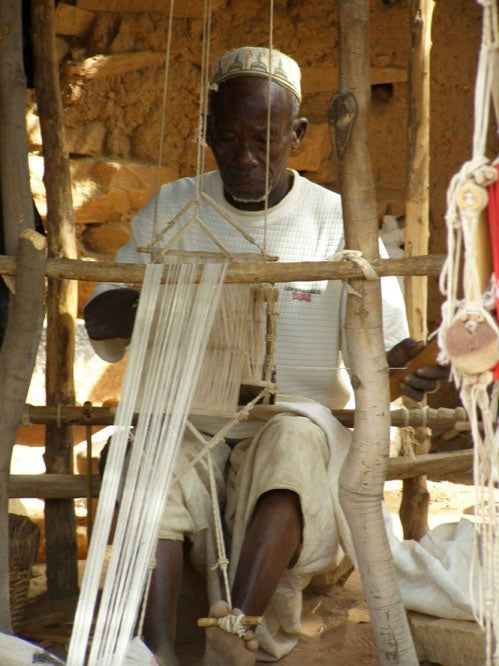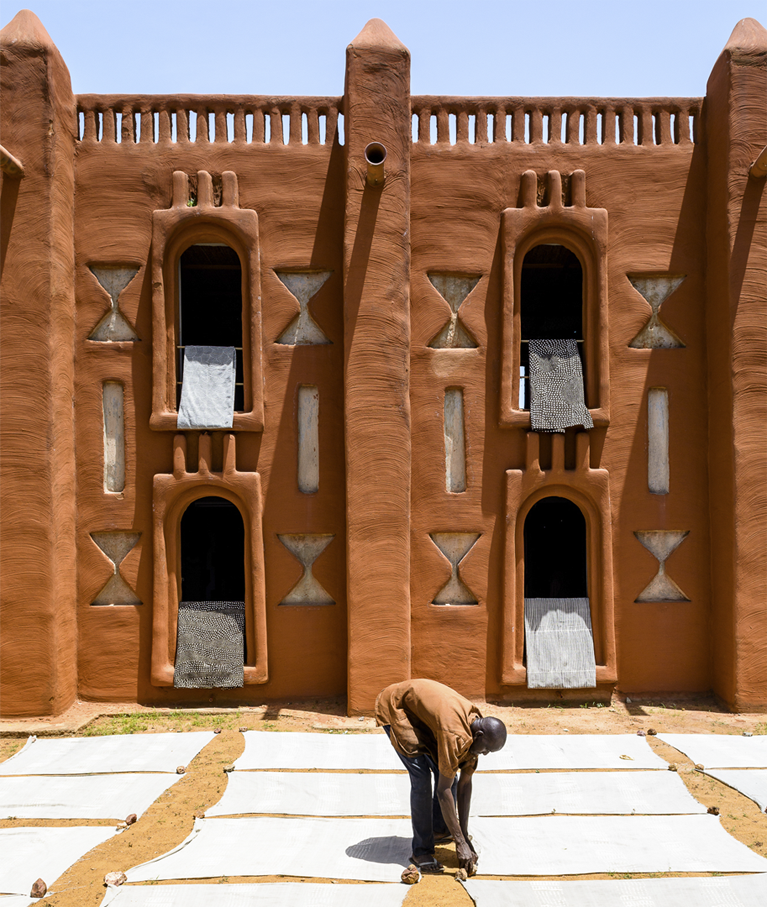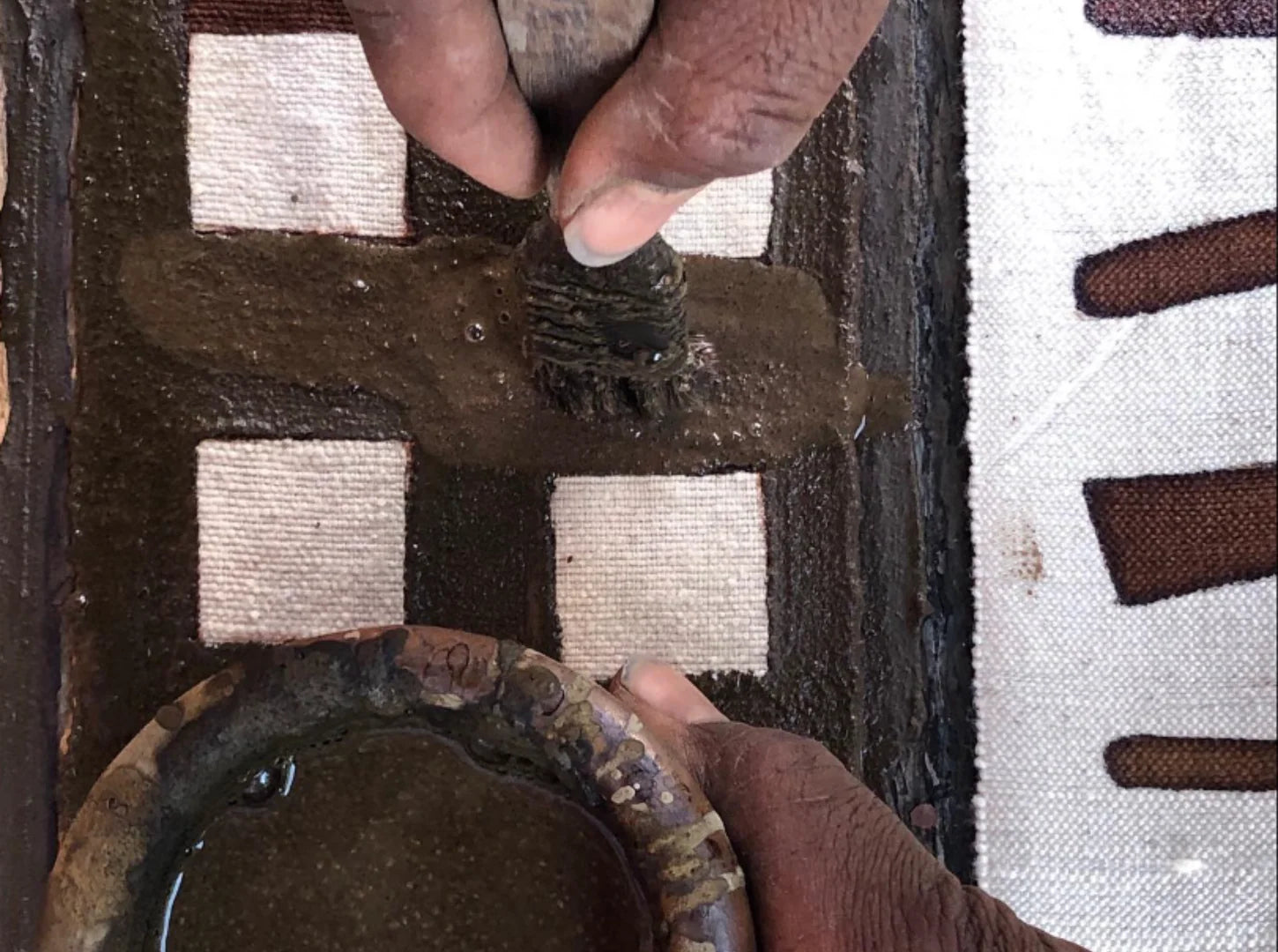How It’s Made

Mudcloth textiles has its roots in West Africa, particularly among the Bambara people of Mali. The word, "Bogolanfini" is derived from the Bambara language, where "bogo" means earth or mud, "lan" means with, and "fini" means cloth. The process of creating mudcloth is deeply ingrained in the cultural practices of the Bambara and other ethnic groups in the region.
The creation of mudcloth is a labor-intensive and intricate process that has been passed down through generations. The journey begins with the cultivation of cotton, which is then spun into yarn and woven into strips. These strips are meticulously sewn together to form the large fabric.
What sets mudcloth apart from other textiles is the dyeing process, which involves the application of fermented mud and plant-based dyes. The mud, rich in iron oxide, is carefully applied to the fabric to create intricate patterns and designs. The application of mud is a delicate art, as the artisan must use precision and skill to achieve their desired motifs.
Mudcloth textiles are not merely decorative; they are infused with symbolism and cultural significance. Each pattern and design holds a story, reflecting the traditions, beliefs and values of the community. Common motifs include geometric shapes, animals, and symbols that convey messages about the natural world, spirituality, and the interconnectedness of life.
The Mudcloth textile is more than just fabric, it is a cultural emblem that transcended communities. Traditionally, mudcloth is used for ceremonial occasions, such as weddings, funerals, and rites of passage. These textiles were also used as a means of communicating and creative expression.




